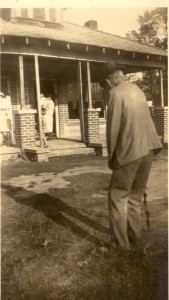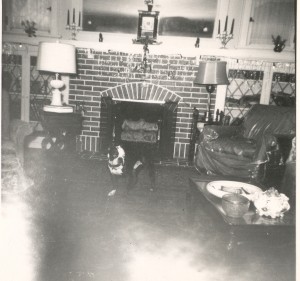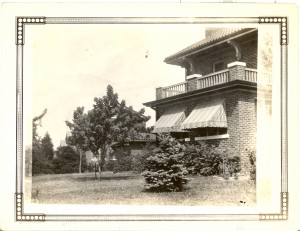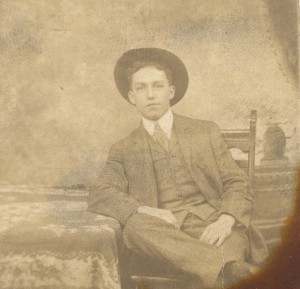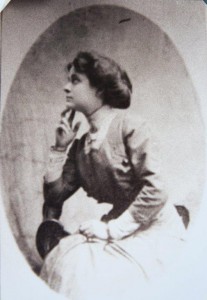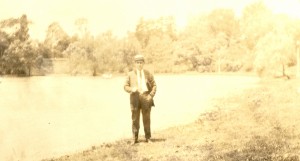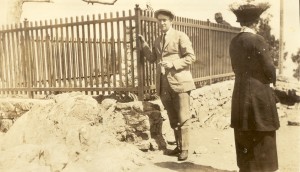Labor Day: Celebrating the Labors of Our Ancestors
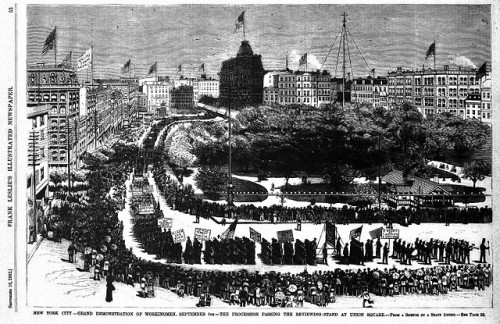
Labor Day officially became a federal holiday in the United States in 1894. “The Gilded Age” included the rise of big business, like the railroads and oil companies, but laborers fought- sometimes literally- for their rights in the workplace. Grover Cleveland signed the law to honor the work and contributions, both economic and for society, of the American laborer. Celebrated on the first Monday in September, ironically the holiday was a concession to appease the American worker after the government tried to break up a railroad strike but failed.
The Labor Day weekend is a good time to think about our ancestors and the work they did to help move our country and their own family forward.
Jefferson Springsteen was a mail carrier through the wilds of early Indiana, traveling for miles on horseback through spring freshets (full or flooding streams from snow melt), forest, and Indian villages. Samuel T. Beerbower, who would be a some-number-great uncle depending on your generation, was the Postmaster in Marion, Ohio, for many years. “Neither snow nor rain nor heat nor gloom of night stays these couriers from the swift completion of their appointed rounds.”

Bad weather, gloom of night, ocean crossings in the mid 1800s, and the threat of disease or injury did not stay our minister, deacon, and missionary ancestors from their appointed rounds either- especially since the felt they were appointed by a higher power. We have quite a number of very spiritual men in the family. Henry Horn became a Methodist circuit rider after coming to America as a Hessian soldier, being captured by George Washington’s troops in Trenton, NJ, then taking an Oath of Allegiance to the United States, and serving in the Revolutionary Army. The family migrated from Virginia to the wilds of western Pennsylvania sometime between 1782 and 1786. A story is told of how he was riding home from a church meeting in the snow. The drifts piled up to the body of the horse, and they could barely proceed on, but Henry did, and was able to preach another day. He founded a church Pleasantville, Bedford Co., Pennsylvania that still stands, and has a congregation, even today. Edward B. Payne and his father, Joseph H. Payne, Kingsley A. Burnell and his brother Thomas Scott Burnell were all ministers, some with formal schooling, some without. Edward B. Payne gave up a lucrative pastorate because he thought the church members were wealthy and educated enough that they did not need him. He moved to a poor church in an industrial town, where he was needed much more, however, he may have acquired his tuberculosis there. He also risked his life, and that of his family, by sheltering a woman from the domestic violence of her husband, and he testified on her behalf.
Abraham Green was one of the best tailors in St. Louis, Missouri in the early 1900s, and many in the Broida family, such as John Broida and his son Phillip Broida, plus Phillip’s daughter Gertrude Broida Cooper, worked in the fine clothing industry.
Edgar Springsteen worked for the railroad, and was often gone from the family. Eleazer John “E.J.” Beerbower worked for the railroads making upholstered cars- he had been a buggy finisher previously, both highly skilled jobs.
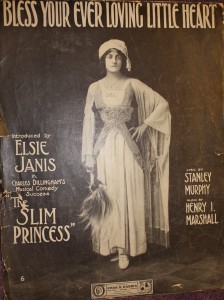
The theater called a number of our collateral kin (not direct lines, but siblings to one of our ancestors): Max Broida was in vaudeville, and known in films as “Buster Brodie.” Elsie Janis, born Elsie Beerbower, was a comedienne, singer, child star in vaudeville, “Sweetheart of the A.E.F” as she entertained the troops overseas in World War I, and then she went on to write for films. Max Broida also did a stint in the circus, as did Jefferson Springsteen, who ran away from home as “a very small boy” to join the circus (per his obituary).
Collateral Lee family from Irthlingborough, England, included shoemakers, as that was the specialty of the town. They brought those skills to Illinois, and some of those tools have been handed down in the family- strange, unknown tools in an inherited tool chest turned out to be over 100 years old!
Will McMurray and his wife Lynette Payne McMurray owned a grocery store in Newton, Iowa. Ella V. Daniels Roberts sold eggs from her chickens, the butter she made from the cows she milked, and her delicious pies at the McMurray store. Franz Xavier Helbling and some of his brothers and sons were butchers in Lawrenceville, Pennsylvania, near Pittsburgh, and had their own stores.
Some of our ancestors kept hotels or taverns. Joseph Parsons (a Burnell ancestor) was issued a license to operate an ‘ordinary’ or “house of entertainment” in 1661 in Massachusetts, and Samuel Lenton Lee was listed as “Keeps hotel” and later as a saloon keeper in US Federal censuses. Jefferson Springsteen had a restaurant at the famous Fulton Market in Brooklyn, NY in the late 1840s.
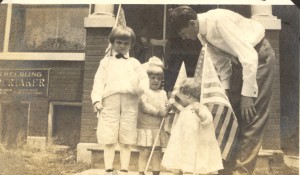
Many of our family had multiple jobs. William Gerard Helbling (AKA Gerard William Helbling or “G.W.”) listed himself as working for a theater company, was an artist, then an undertaker, and finally a sign painter. George H. Alexander was artistic as well- he created paintings but also worked as a lighting designer to pay the bills.
Sometimes health problems forced a job change. Edward B. Payne was a Union soldier, librarian, and then a pastor until he was about 44 when his respiratory problems from tuberculosis forced him to resign the pulpit. For the rest of his life he did a little preaching, lecturing, and writing. He also became an editor for a number of publications including, “The Overland Monthly,” where he handed money over from his own pocket (per family story) to pay the young writer Jack London for his first published story. Edward B. Payne even founded a Utopian colony called Altruria in California! He and his second wife, Ninetta Wiley Eames Payne, later owned and conducted adult ‘summer camps’ that were intellectual as well as healthy physically while camping in the wild and wonderful northern California outdoors.
Other times, health problems- those of other people- are what gave our ancestors jobs: Edward A. McMurray and his brother Herbert C. McMurray were both physicians, as was John H. O’Brien (a Helbling ancestor), who graduated from medical school in Dublin, Ireland, and came to America in 1832. He settled in western Pennsylvania, still wild and in the midst of a cholera epidemic that was also sweeping the nation; he had his work cut out for him. (It appears he did not get the same respect as other doctors because he was Irish, and this was pre-potato famine.) Lloyd Eugene “Gene” Lee and his father Samuel J. Lee owned a drugstore in St. Louis, as did Gene’s brother-in-law, Claude Aiken. Edith Roberts McMurray Luck worked as a nurse since she received a degree in biology in 1923.
We have had many soldiers who have helped protect our freedom, and we will honor some of those persons on Veterans Day.
We cannot forget the farmers, but they are too numerous to name them all! Even an urban family often had a large garden to supplement purchased groceries, but those who farmed on a larger scale included George Anthony Roberts, Robert Woodson Daniel, David Huston Hemphill, Amos Thomas, etc., etc. We even have a pecan farmer in the Lee family- William Hanford Aiken, in Waltham County, Mississippi, in the 1930s-40s.
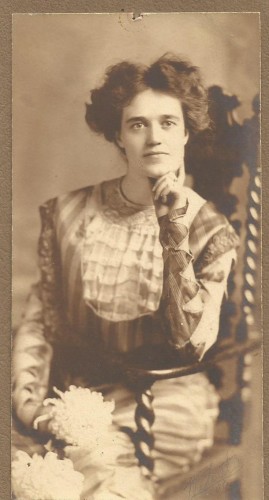
We must also, “Remember the ladies” as Abigail Adams entreated her husband John Adams as he helped form our new nation. He/they did not, so 51% of the population-women- were not considered citizens except through their fathers or husbands. Many of these women, such as Lynette Payne McMurray, labored to get women the right to vote, equal pay, etc. (Lynette ‘walked the talk’ too- she was the first woman to ride a bicycle in Newton, Iowa! Not so easy when one thinks about the clothing involved.) Some men, like her father, Edward B. Payne, put their energy into the women’s suffrage movement as well. Many of our ancestors worked for the abolition movement too, including the Payne and Burnell families.
A woman worked beside her husband in many families, although she would get little credit for it. Who cooked the meals and cleaned the rooms for the Lee and Parsons innkeepers? Likely their wives, who also had to keep their own home clean, laundry washed, manage a garden and often livestock- many families kept chickens even if they didn’t have a farm. They raised and educated their many children too, sometimes 13 or more. Oh yes, let’s not forget that women truly ‘labored’ to bring all those children into the world that they had made from scratch. (Building a human from just two cells makes building a barn seem somewhat less impressive, doesn’t it?) Some of them even died from that labor.
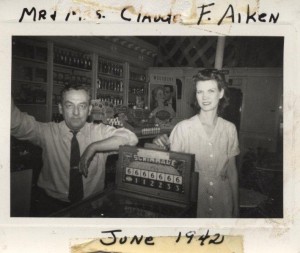
Working alongside one’s husband could be frightening due to the dangers of the job. A noise in the Aiken family drugstore in St. Louis, Missouri in 1936 awoke Claude and Mildred Aiken since they lived in the back of the store. Claude look a gun and went into the store while Mildred called the police. Claude fired the gun high to frighten the intruder- Mildred must have been very scared if she was in the back, wondering who had fired the shot and if her husband was still alive. Thankfully he was, and the police were able to arrest the thief, who wanted to steal money to pay a lawyer to defend him in his three previous arrests for armed burglary and assault.
We applaud all of our ancestors who worked hard to support their family. Their work helped to make the US the largest economic power in the world, and a place immigrants would come to achieve their ‘American dream.’ We hope our generation, and the next, can labor to keep our country prosperous and strong.
Notes, Sources, and References:
- There are too many folks listed here to add references, but using the search box on the blog page can get you to any of the stories that have been posted about many of these persons. Of course, there is always more to come, so stay tuned!
Please contact us if you would like higher resolution images. Click to enlarge images.
We would love to read your thoughts and comments about this post (see form below), and thank you for your time! All comments are moderated, however, due to the high intelligence and persistence of spammers/hackers who really should be putting their smarts to use for the public good instead of spamming our little blog.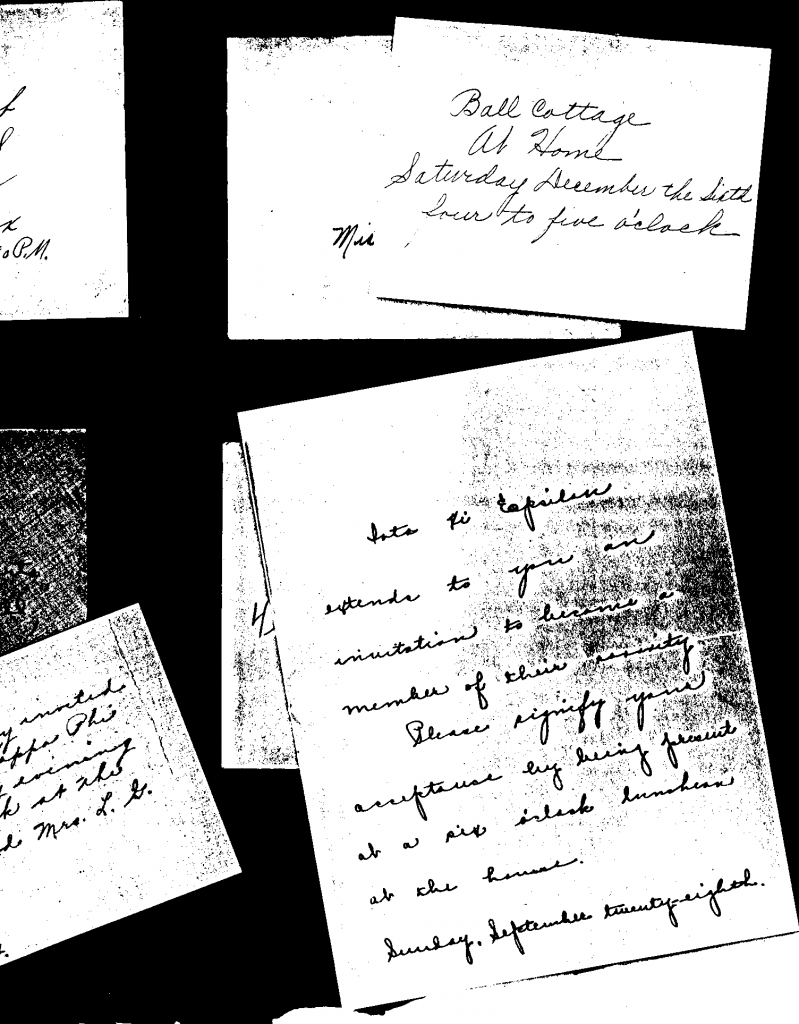
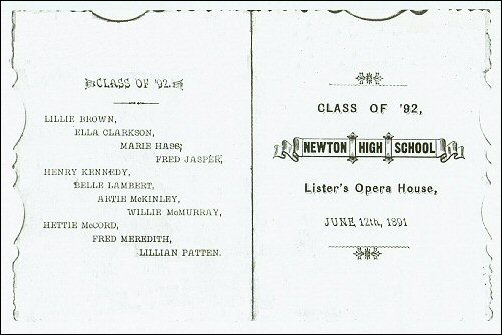
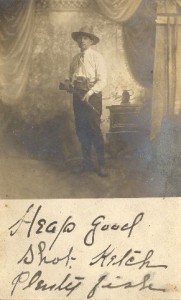
![Mabel Mulhollen is written on the back, Nov. '28 [1928] on the front.](http://heritageramblings.net/wp-content/uploads/2014/10/Mabel_mulhollen-184x300.jpg)


